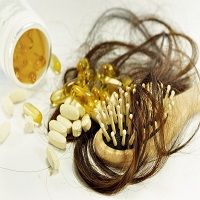Human Pluripotent Stem Cells: The Future of Hair Regeneration?
Hair loss, whether partial or close to baldness, is a condition that is frequently associated with feelings of poor self-confidence (even depression in severe cases) across all demographics of affected patients.

Hair loss, whether partial or close to baldness, is a condition that is frequently associated with feelings of poor self-confidence (even depression in severe cases) across all demographics of affected patients.
Researchers from Sanford-Burnham Medical Research Institute in La Jolla, CA, recently reported they had found a way to generate new hair by utilizing human pluripotent stem cells.
The most common form of hair loss, alopecia, is hereditary hair loss affecting more than 50 million men and 30 million women in the US. Other underlying factors for hair loss include extreme stress; medical conditions such as thyroid disorders, anemia, and psoriasis; and adverse side effects of certain medications.
Experts had touted common hair loss treatments available including hair restoration medication and hair transplantation.
In a recent study published in the journal PLOS ONE, Alexey Terskikh, PhD, associate professor in the Development, Aging and Regeneration Program at Sanford-Burnham, and colleagues disclosedthe methods they undertook to effectively grow new hair through human pluripotent stem cells (hPSCs), cells derived from human embryos or human fetal tissue that can become any other cell type in the body.
Terskikh and his team created a mechanism that encouraged hPSCs to turn into dermal papilla cells, which work to“regulate the formation of hair follicles and the hair growth cycle”. Their technique proved to be more effective than current hair transplant methods on their mice models.
While adult dermal papilla cells would have typically been unsuitable for hair transplants, since the cells were rather difficult to gather in large quantities, the team of researchers looked at potential loopholes.
Terskikh said, "We have developed a method using human pluripotent stem cells to create new cells capable of initiating human hair growth. The method is a marked improvement over current methods that rely on transplanting existing hair follicles from one part of the head to another. Our stem cell method provides an unlimited source of cells from the patient for transplantation and isn't limited by the availability of existing hair follicles."
According to the researchers, they plan to transplant the hPSC-derived dermal papilla cells back into humans to test for safety and efficacy. "We are currently seeking partnerships to implement this final step," said Terskikh.